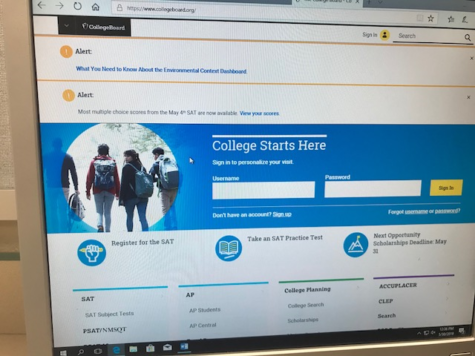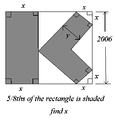SAT Controversy

The CollegeBoard recently came out with a new logo for the SAT.
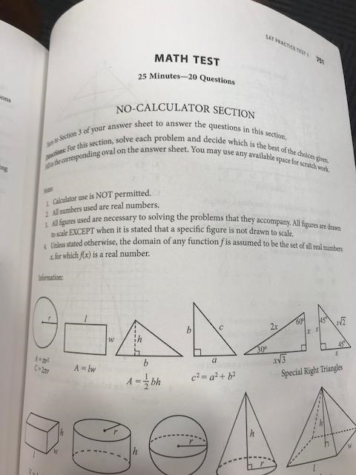
The math section of the SAT includes a calculator and non-calculator section.
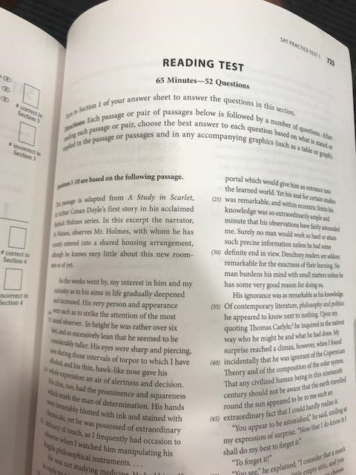
The reading portion of the SAT includes passages and questions that follow.
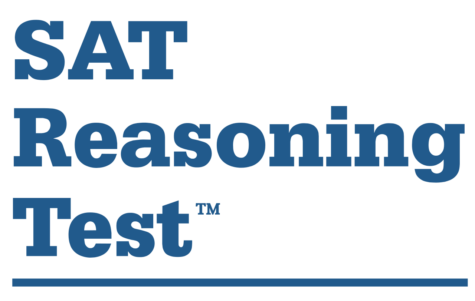
The SATs are standardized tests that are “optional” test that is widely used for college admissions in the United States. College board, the ones who made the SATs, clearly states that the standardized tests are “optional,” but in reality, it isn’t. These tests are a major part of college the college admissions process in the United States, and, therefore, a majority of colleges require an SAT score. This makes it almost mandatory to take the standardized tests if you wanna go to a decent four-year college. Also, College board has almost a monopoly on standardized tests for colleges due to how widely known the SATs are compared to its rival, the ACTs.
Markus Terhorst’s interview provided a detailed summary of what a high school senior thought of this controversy. “The SAT is full of some *bleep* for what they are doing to the points. They don’t tell anyone what they do and add in points on reasons that they didn’t even bother to explain. It bothers me more since I am done with the SATs since my score won’t change regardless of what happens now.” Clearly, there is lots of dissatisfaction and complaint that is shown by the Lafayette High School senior. Another Lafayette High School student, Steven Little, says that “he doesn’t care anymore” due to the fact that he is a senior and it doesn’t matter to him. A Warhill High School junior, Catherine Park, gave a testimony saying, “I hate the SATs due to multiple reasons. Firstly, I hate standardized tests and I always stress about taking the test. Secondly, it’s really unfair how they grade. Do you get extra points for being a minority or poor? That’s really unfair for a lot of people including me. It doesn’t work like that in the real world, you don’t get pity partied into getting a job. I might seem to be harsh, but people shouldn’t be getting into colleges that they don’t deserve to go to.” Park brings up some good points. How is one test supposed to determine a student’s college readiness? A student may just be having a bad day. For instance, if a student who signed up for the test in advance is having issues at home and are unable to take the test on that day won’t be refunded. Instead, the test will simply be given to the next student in line that’s willing to pay.
Another unfair program by College Board’s SAT is the fact that you have to pay Twenty-Five dollars to see and review your answers on past SATs that you have taken. This fee doesn’t even have any financial help at all, you need to pay it all from your own pocket. There are people out there that can’t even pay for a burger, so it makes it very unfair for people that can’t pay. Having to pay to see answers for a test that already was paid for sets an unfair precedent for people to uphold. Considering the SAT is done on paper, their profit margin is already massive. CollegeBoard relies on a volunteer system in order to garner proctors for their sessions, which is free. Since CollegeBoard already makes plenty of money off the students they serve

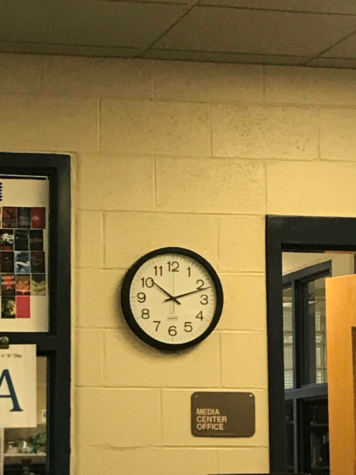
The SAT lasts a total of three hours or three hours and fifty minutes with the optional essay
The SAT is actually curved on the basis of how the college board deems the test. This can create some unfair chances for others considering there is no basis to describe how hard a single test actually is. Therefore, people can actually be hurt by this curve due to some people actually taking a harder test in their opinion and get penalized because the college board thinks it was easy. Curving the SAT scores can hurt people by making it harder for them to get into the SAT range for a college, and in essence, making it harder for people to get into the colleges they want. For example, a friend of mine from Lafayette High School actually got a raw score in the range of Virginia Tech’s acceptance, but with the curve, it was actually out of the range and couldn’t get into their engineering program. This system of curving is quite unfair and unethical. It is impossible to tell someone that a test is harder or easier for an individual because everyone has their own strengths and weaknesses. Meaning that a person can be penalized or rewarded just based solely off what test they receive. The problem is that one student could be extremely good at math and weaker in English and one person could be average in both and the person who is average in both could be punished because the math section is “harder” meaning the person who is skilled in math would get lucky and get a better score. Also, with more and more pressure on students to get into these good colleges it could actually hurt those trying to get these scores. Especially those who are trying to get into these extremely competitive ivy league schools like Yale, Harvard, Cornell, Princeton, ect. This cure can create many positive situations for the people who were screwed over by this curve.
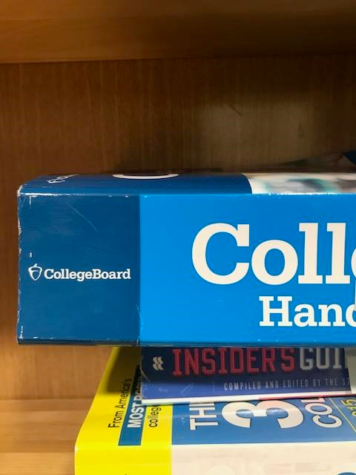
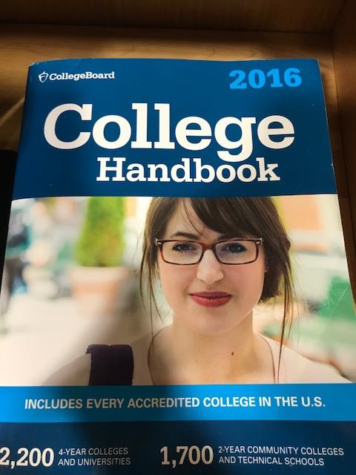
The College Board not only offers testing, but resources such as practice textbooks and various handbooks.
The SAT is a standardized test administered to High School students across the country that is used to gauge their academic prowess. SAT scores are sent to colleges, allowing the college to see an applicant’s strength in both Math and English. These two sections are further divided into two separate sections. The math score is comprised of a non-calculator and calculator section, and the English section is split into a reading section and grammar section. The lengths of these sections and their allotted time limits vary depending on the sections, but the entire test takes three hours to complete. Throughout the course of the SAT’s history, it has been subject to harsh criticism focused around the test’s fairness. Entangled with this issue comes controversy over how CollegeBoard, the maker and distributor of the SAT, curves test scores. They do this by determining how hard the individual tests are, comparing the question difficulty of a test to the average SAT, and then either add or remove points accordingly. While this sounds fair at first glance, this system is flawed for one simple reason: There is no true way to assess how hard a question is, which means difficulty is relative. Because of this, CollegeBoard can try and determine the overall difficulty of an SAT, but the curve they assess is never truly representative of a student’s true score. The difficulty of questions can also vary from student to student, as does intellect. Tests that one person may find difficult may be easier for another, but the curve would prevent the higher scoring student from achieving a higher score. SAT curving interferes with the proportions that we use to compare two students. If two students take the SAT at different times in the school year and get the same number of questions correct, the test curves will yield different scores. CollegeBoard’s inability to successfully scale tests questions can prevent students from achieving the true score they earned, rewarding those who know less and hurting the better students. CollegeBoard is also scrutinized for the price of the SAT and AP tests they provide, as the company is supposedly a non-profit. The SAT costs $42 if paid before the deadline, and $76 with a ‘late’ fee. This only matters because most students take the SAT multiple times. Over the course of a year, CollegeBoard makes enormous amounts of money off of students and does little to reinvest that money into the test making process.
